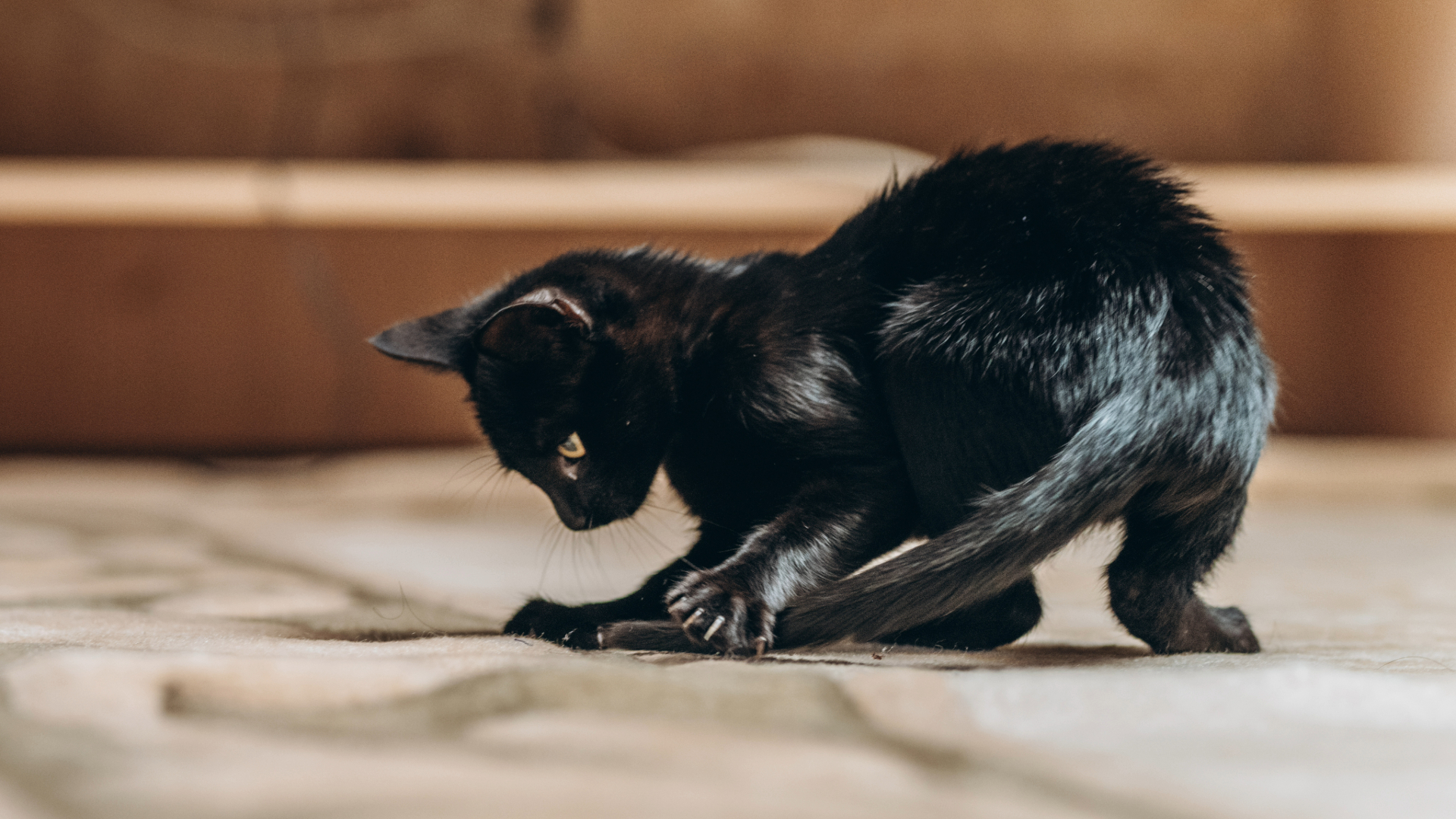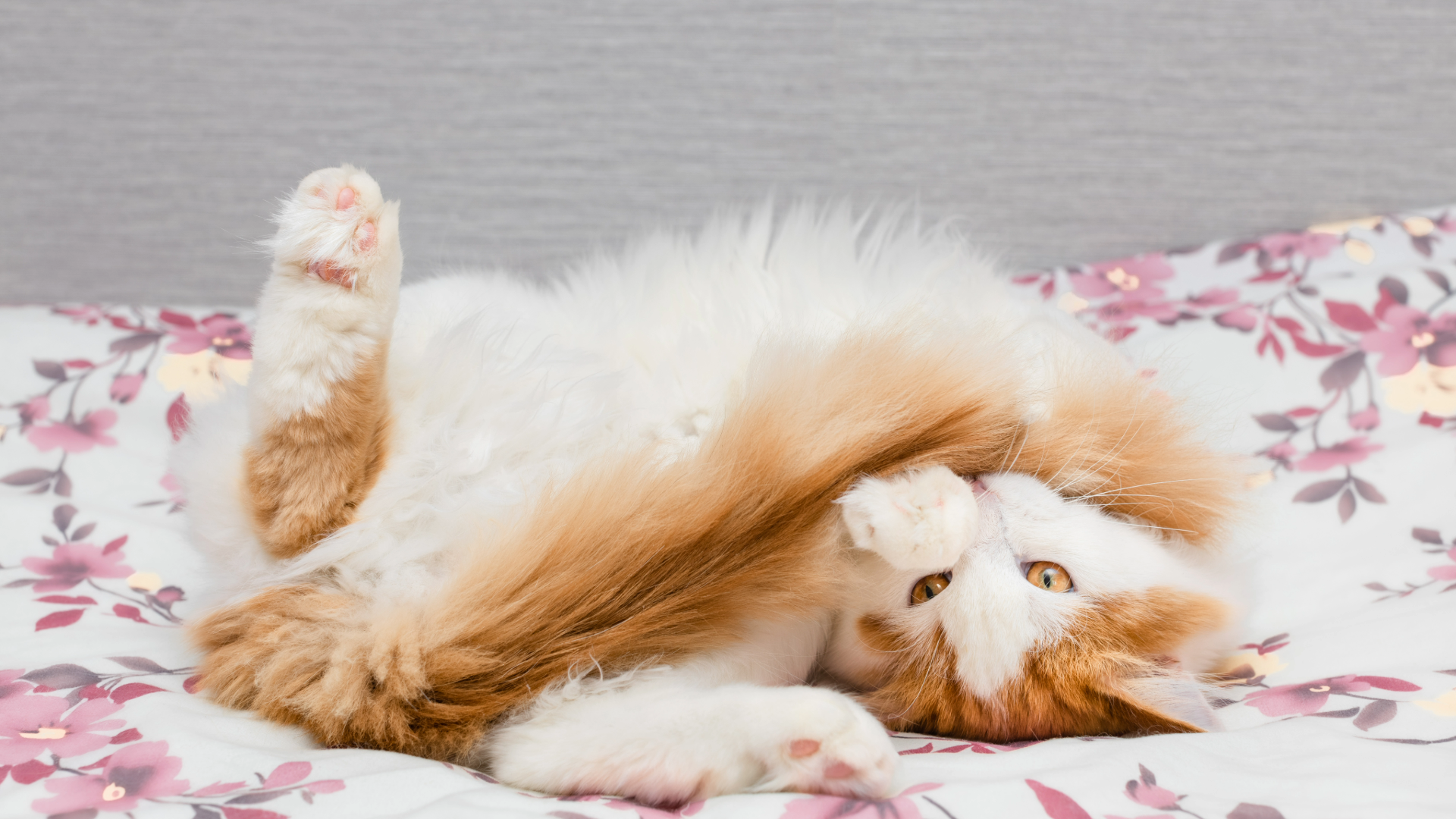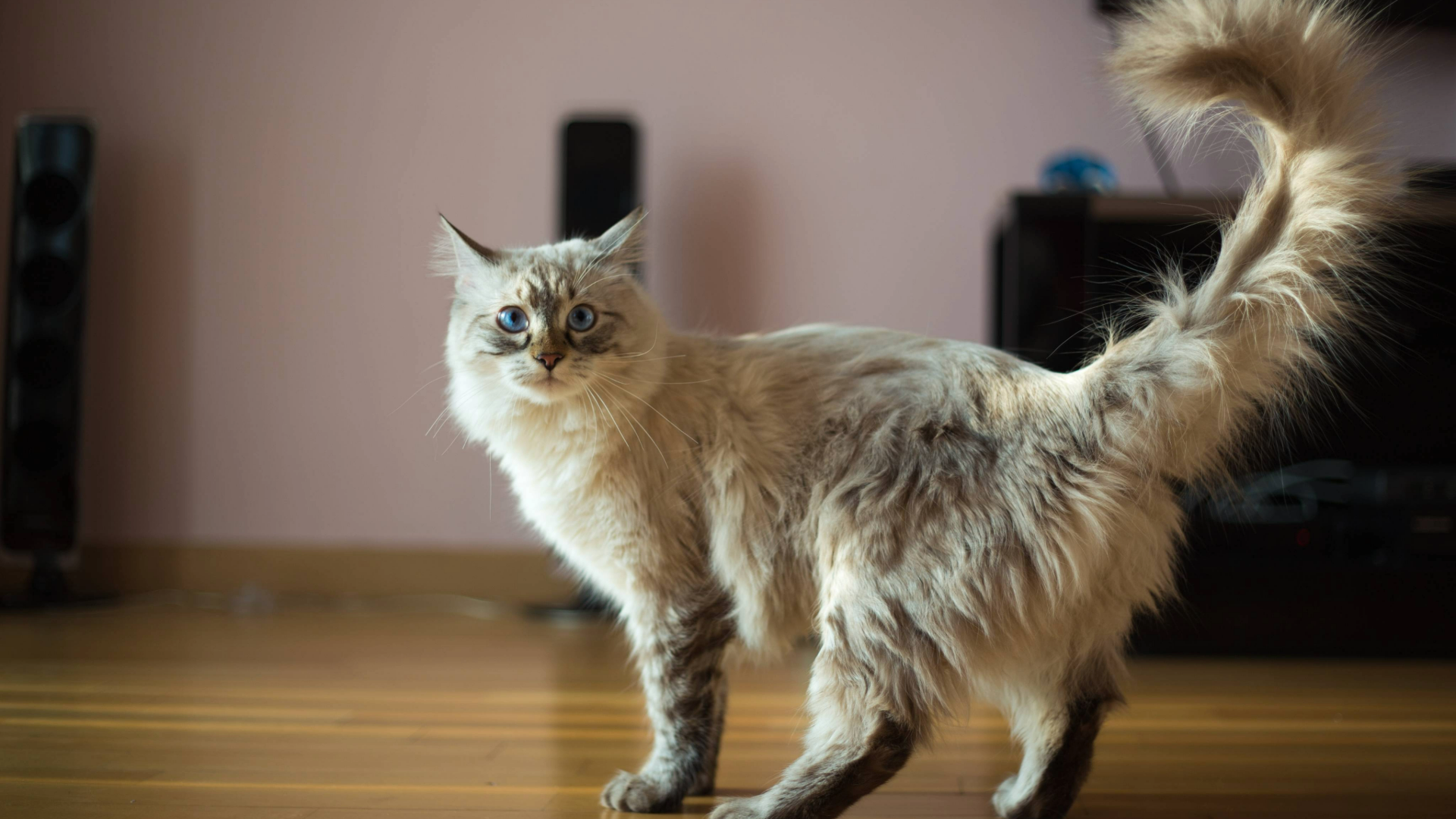5 reasons your cat plays with their tail, according to a vet
Wondering why cats play with their tail? Vet Dr Joanna Woodnutt explains the reason for this adorable behavior

Why do cats play with their tail? It’s a fair question from any cat owner – or, indeed, anybody who spends their time watching cat videos on the internet. This adorable and funny behavior is really common in cats, but why do they do it?
I’ve been a vet for eight years, and – though I’m yet to see a cat do this in my consult room – it’s something I’m asked a lot. It’s also something I’ve noticed in my own foster cats, even when I buy them all the best cat toys. So, why do cats chase their tail? And should we stop them, or join in?
Why do cats play with their tail?
1. Boredom or stress
Cats who haven’t got enough mental stimulation are the most common patients I see chasing their tails. Since our domestic cats are naturally sleepy and seem lazy, it’s sometimes hard to remember that in the wild they’d spend much of the day hunting (and most of the time failing!) to catch food.
Instead, we feed them from a bowl, they gulp it down in minutes, and then spend the rest of the day not sufficiently stimulated. This can lead to behaviors like tail chasing in cats. Try increasing your cat’s mental workload by introducing play, training sessions, or the best cat puzzle feeders.
Frisco Fabric Teaser Wand Cat Toy | Chewy
Wand toys are a great way to play with your cat, as they move in an interesting way and keep your hands out of the way of sharp claws. This option is even tail-like, which might appeal to cats who have a particular fondness for playing with their tails!
2. It's fun!
Even cats who have sufficient mental stimulation can chase and play with their tails. It’s like a toy they permanently carry around.
This is more likely in young kittens, who sometimes get a hankering to practice hunting, and lock onto whatever is nearest – even if that’s their own tail. Occasional tail chasing isn’t anything to worry about.
3. The tail is painful or itchy
Sometimes, cats can start chasing their tail because it’s painful or itchy, in which case you might notice their body language is more frustrated than playful.
Fleas can cause cats to be generally itchy and want to catch their tails, or a tail injury can also cause them to play with their tail while they try to clean the wound.
If your cat suddenly starts playing with their tail, it might be a good idea to examine the tail and check them for fleas to help rule this out. If you spot a wound, make sure you take your cat to the vet to be treated.

4. Anal gland problems
Most people don’t know that cats have anal glands as well as dogs! Cats have problems with their glands far less commonly than dogs, probably because of their cleaning routine.
But that doesn’t mean cats can’t have problems, especially if they’re a little overweight or not as limber as they used to be. You might notice cats with anal gland problems scooting their bottoms on the floor or playing with their tail as they try to ease their discomfort.
If you suspect this, take your cat to the vet, who can take a look and let you know if the anal glands are the reason your cat is playing with their tail.
5. Feline hyperesthesia syndrome
Cats with feline hyperesthesia syndrome (FHS) have overactive nerves in their skin, which causes them to feel things intensely or feel things that aren’t there, especially on their lower back.
It seems to be more common in Siamese cats, and can cause them to chase and play with their tail. FHS can only be diagnosed after other causes of hypersensitivity are ruled out.
Should I stop my cat from playing with their tail?
If your playful kitten occasionally plays with their tail, that’s probably normal – you could try increasing their other play opportunities with a new cat toy, or just sit back and laugh at their antics.
As long as they aren’t constantly playing with their tail, they’re probably just enjoying the novelty of carrying their toys with them. On the other hand, if your less-playful cat has suddenly started to play with their tail, it’s more of a concern.
It’s a good idea to look for other symptoms and check them over for wounds, and schedule an appointment with your vet if you spot anything amiss or they don’t stop after a day or two.

Is it OK to play with a cat’s tail?
In general, it’s not OK to play with a cat’s tail. Most cats find this annoying, and doing so is seen as a breach in their trust in you.
Not only that, but by playing with your cat’s tail, you’re inviting your cat to play with your hands – something that can lead to inappropriate play later down the line. Instead, you'll want to learn how to play with a cat the right way.
Hopefully, we’ve explained above why cats play with their tails, and now you know whether to intervene or just enjoy when your crazy kitty starts being silly. Remember, though – it’s never wrong to go to the vet for a check up if your instincts are saying this isn’t normal behavior. After all, you know your cat best.
Read next: Reasons why your cat wants to play all the time and why cats chase lasers.

After graduating as a vet from the University of Nottingham, Joanna went on to practice companion animal medicine in the Midlands. She quickly developed a love of consulting and helping clients with medical problems such as dermatology, behavior and nutrition - anything that involved helping clients understand their pets better.
Edited by Megan Milstead.
Recent updates
This page was last updated in April 2025 by Joanna Woodnutt.
PetsRadar Newsletter
Get the best advice, tips and top tech for your beloved Pets
After graduating as a vet from the University of Nottingham, Dr Joanna Woodnutt went on to practice companion animal medicine in the Midlands. Since then, she has also written for countless online and print publications and is a regular contributor for Edition Dog Magazine.

